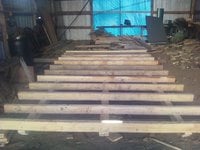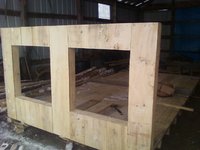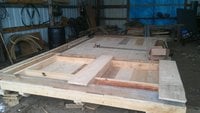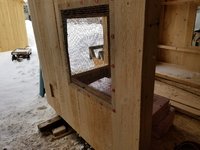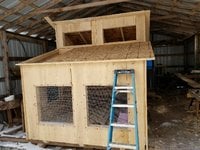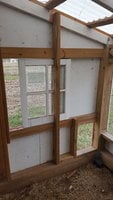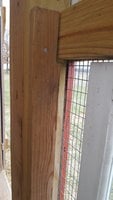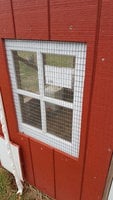Jenny Loves Chickies
Songster
Hi everyone!!
I began researching coops a year ago and after reading JackE’s amazing thread about his open air coop and WthrLady’s thread about her adorable coop...I decided this was the way to go. Afterall aren’t so many thing reverting back to the “good old fashioned” way? This idea has been in existence since the early 1900’s which is all the more reason to make one!
We decided on 8x14 for several reasons and hope to end up closer to 8.5x14 as it seems the closest you get to the magical ratio of 1.6 the better.
After pricing out the supplies we contacted several contractors just to see how much it would cost. We were just about to give this thing a go ourselves when I happened to see a garden shed on Craigslist built by the Amish in New York about 2 hours from us. The craftsmanship of Amish built anything is so obvious for anyone that has seen their work. I called the guy and told him what we were looking for, he quoted me a very reasonable price...they are working on it now and it will he delivered just after Christmas!!! The Amish build everything on a skid as they can pull it around with a horse. They will bring it in on a trailer and drop it into location if accessible or you can drag it with a tractor wherever you’d like.
I will post pictures as we receive them, if anyone would like the specs I provided to them just let me know. And if you are anywhere near Oriskany Falls NY I’m happy to share their contact info with you as they said they will be building lots of these coops!!
I began researching coops a year ago and after reading JackE’s amazing thread about his open air coop and WthrLady’s thread about her adorable coop...I decided this was the way to go. Afterall aren’t so many thing reverting back to the “good old fashioned” way? This idea has been in existence since the early 1900’s which is all the more reason to make one!
We decided on 8x14 for several reasons and hope to end up closer to 8.5x14 as it seems the closest you get to the magical ratio of 1.6 the better.
After pricing out the supplies we contacted several contractors just to see how much it would cost. We were just about to give this thing a go ourselves when I happened to see a garden shed on Craigslist built by the Amish in New York about 2 hours from us. The craftsmanship of Amish built anything is so obvious for anyone that has seen their work. I called the guy and told him what we were looking for, he quoted me a very reasonable price...they are working on it now and it will he delivered just after Christmas!!! The Amish build everything on a skid as they can pull it around with a horse. They will bring it in on a trailer and drop it into location if accessible or you can drag it with a tractor wherever you’d like.
I will post pictures as we receive them, if anyone would like the specs I provided to them just let me know. And if you are anywhere near Oriskany Falls NY I’m happy to share their contact info with you as they said they will be building lots of these coops!!

